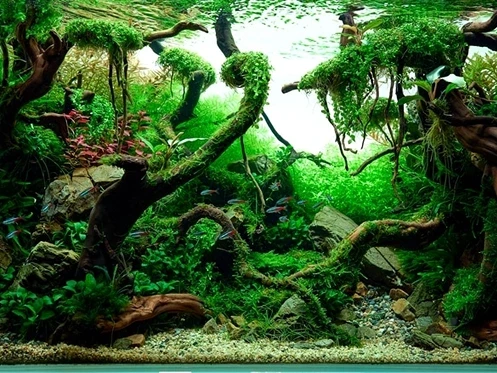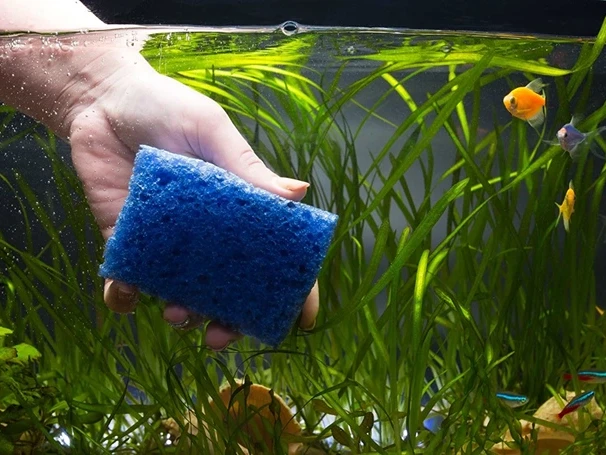Maintaining a healthy aquarium is both an art and a science. It requires patience, knowledge, and a keen eye for detail. Whether you’re a seasoned aquarist or a newcomer to the hobby, understanding how to tackle common aquarium issues is crucial for creating a thriving aquatic environment. This article delves into the most frequent challenges faced by aquarium enthusiasts in the United Kingdom and offers practical solutions to ensure your aquatic friends live in a healthy and balanced ecosystem.
Key Takeaways
- Maintain optimal water quality to prevent most aquarium issues.
- Control algae growth through regular maintenance and proper lighting.
- Monitor fish health closely and quarantine new arrivals to prevent disease spread.
- Address equipment failure promptly to avoid disrupting the aquarium environment.
- Stabilize aquarium parameters such as pH, ammonia, nitrite, and nitrate levels for a thriving aquatic life.
Register for our latest in-depth reviews and product round-ups from the experts
Enter your email address below to receive our twice monthly reviews emails.
By entering your details, you are agreeing to our terms and conditions and privacy policy. You can unsubscribe at any time.
Introduction to Aquarium Care
The joy of watching a well-maintained aquarium, with its vibrant fish gliding through crystal-clear water, is unmatched. However, achieving this requires understanding the common issues that can disrupt the harmony of your aquatic setup. From water quality problems to fish health concerns, each issue demands specific solutions. By staying informed and proactive, you can ensure your aquarium remains a serene and healthy habitat for its inhabitants.
Common Aquarium Issues and Solutions

Water Quality Issues
Water quality is the cornerstone of a healthy aquarium. Poor water quality can lead to a host of problems, including stress, disease in fish, and excessive algae growth.
- Identifying signs of poor water quality: Cloudy water, unpleasant odors, and visible waste are clear indicators. Fish gasping for air at the surface or showing signs of lethargy also suggest water quality issues.
- Steps to improve water quality: Regular water changes (20-30% every two weeks) are essential. Use a gravel vacuum to remove waste from the substrate and test water parameters weekly to ensure they remain within safe ranges.
- Preventive measures: Overfeeding is a common cause of poor water quality. Feed your fish only what they can consume in a few minutes, and remove any uneaten food promptly.
Table 1: Optimal Water Parameters for Freshwater Aquariums
| Parameter | Ideal Range |
| pH | 6.5 – 7.5 |
| Ammonia | 0 ppm |
| Nitrite | 0 ppm |
| Nitrate | < 20 ppm |
| Temperature | 22-26°C (72-79°F) |
Algae Overgrowth
Algae is a natural part of aquatic ecosystems, but excessive growth can be unsightly and harmful to your aquarium’s health.
- Causes of algae overgrowth: Excessive light and nutrients (from fish waste, decaying plants, and uneaten food) are the primary culprits.
- Algae control methods: Limit light exposure to 8-10 hours per day and use a timer to maintain consistency. Introduce algae-eating fish or snails, and consider live plants to compete with algae for nutrients.
- Preventing future algae issues: Regular maintenance, including water changes and substrate cleaning, is key. Ensure your filtration system is adequate for your aquarium’s size and bioload.

Fish Health Problems
Keeping your fish healthy is a top priority. Recognizing and treating common diseases early can prevent them from spreading.
- Common fish diseases and treatments: Ich or white spot disease is treated with over-the-counter medications and raising the water temperature. Fin rot requires improving water quality and antibiotic treatments.
- Quarantine practices for new fish: Always quarantine new arrivals for at least two weeks to monitor for signs of disease before introducing them to your main tank.
- Importance of regular health checks: Observe your fish daily for signs of stress or disease, including changes in behavior, appearance, or appetite.
Equipment Failure
Reliable equipment is essential for maintaining a stable environment in your aquarium.
- Identifying and troubleshooting common equipment failures: Regularly check heaters, filters, and air pumps for signs of wear or malfunction. Unusual noises or decreased performance are often the first indicators of a problem.
- Maintenance tips for aquarium equipment: Clean and inspect your equipment according to the manufacturer’s instructions. For filters, rinse media in tank water during water changes to preserve beneficial bacteria.
- When to replace vs. repair: While some items like air stones are inexpensive to replace, more significant investments like heaters and filters may be repairable. Consult with a professional if you’re unsure.
Unstable Aquarium Parameters
Stable water parameters are vital for the health of your aquarium inhabitants.
- Understanding pH, ammonia, nitrite, and nitrate levels: Regular testing allows you to monitor these critical parameters. Sudden changes can stress or even kill your fish.
- How to stabilize aquarium parameters: Use products designed to adjust pH safely. For ammonia and nitrite spikes, water changes and reviewing your tank’s bioload are necessary steps.
- Importance of regular testing: Invest in a reliable aquarium test kit and check your water parameters weekly. This proactive approach can help you avoid many common aquarium issues.

Enhancing Aquarium Environment
A thriving aquarium is more than just a tank with fish; it’s a dynamic ecosystem that supports a variety of life forms. Enhancing your aquarium environment not only makes it more aesthetically pleasing but also promotes the health and happiness of its inhabitants.
- Tips for creating a thriving aquarium environment: Incorporate a variety of live plants to improve water quality and provide hiding spots. Choose a substrate that suits the needs of your fish and plants. Consider the natural habitat of your fish when decorating your tank to create a more authentic and comforting environment for them.
- Importance of biodiversity in the aquarium: A diverse mix of fish, invertebrates, and plants can help stabilize the aquarium’s ecosystem. Different species play unique roles, from algae control to substrate aeration, contributing to the overall health of the aquarium.
- Choosing the right plants and decorations: Select plants that are compatible with your aquarium’s lighting and water parameters. Decorations should be safe for aquatic use, with no sharp edges or toxic materials. Arrange your plants and decorations to create an engaging and natural-looking landscape.
Table 2: Popular Aquarium Plants and Their Benefits
| Plant Name | Light Requirement | Benefit |
| Java Fern | Low to Medium | Easy to care for; does not require substrate |
| Anubias | Low to Medium | Hardy; good for beginners; attaches to rocks/wood |
| Amazon Sword | Medium to High | Fast-growing; provides excellent cover |
| Cryptocoryne | Low to Medium | Variety of colors and sizes; easy to maintain |
| Water Wisteria | High | Fast-growing; helps control nitrates |
FAQs Based on Common Aquarium Issues
It’s recommended to change 20-30% of the water every two weeks. However, this can vary depending on your tank’s size, filtration, and bioload. Regular testing can help determine if more frequent changes are needed.
Signs of stress include erratic swimming, hiding more than usual, loss of appetite, and faded colors. Stress can be caused by poor water quality, aggressive tank mates, or unsuitable tank conditions.
Limit light exposure to 8-10 hours a day, control nutrient levels with regular water changes, and consider adding algae-eating fish or plants. Ensuring your tank is not overstocked and avoiding overfeeding are also key.
Cloudy water can be caused by bacterial blooms, overfeeding, or insufficient filtration. Improve filtration, reduce feeding, and perform water changes. For bacterial blooms, patience is key as they often resolve on their own.
Martin Cochran
Dive into fish care with Martin, your guide from the coastal beauty of Brighton. He shares tips on keeping your aquatic companions happy and healthy. Join him on a fin-tastic journey where every swim is a voyage of joy. Trust Martin for a smooth sailing aquatic experience.




